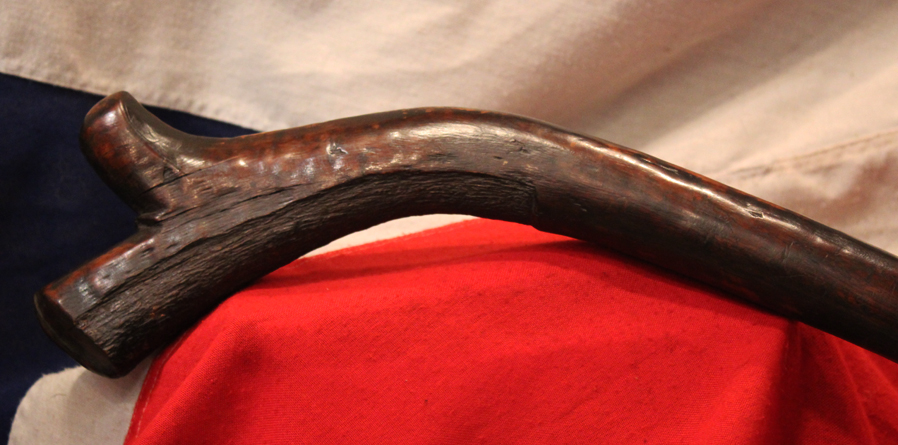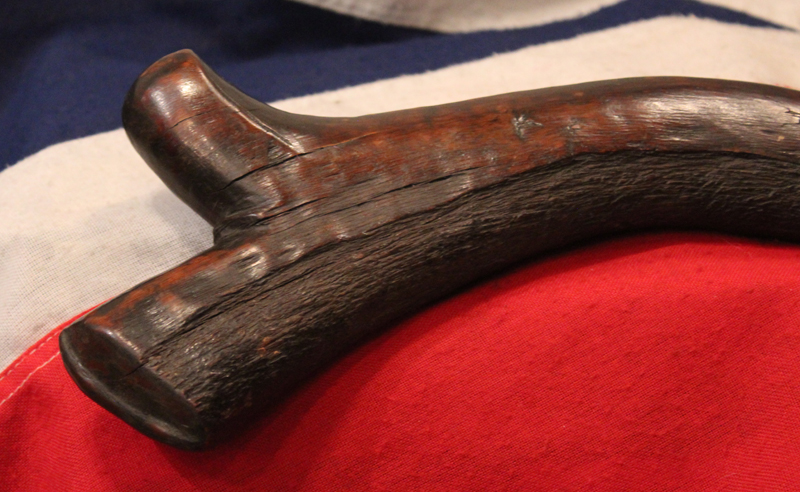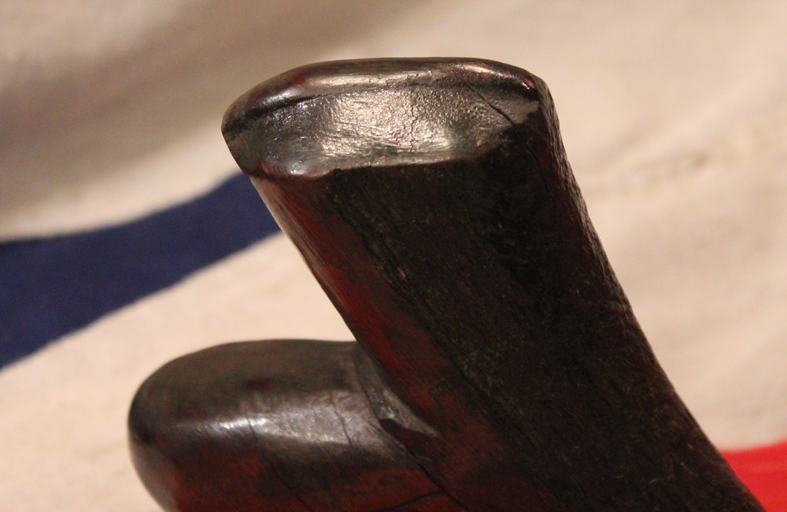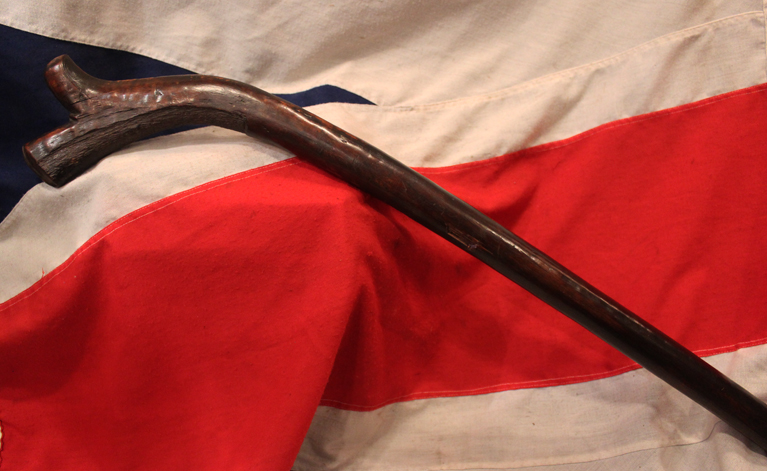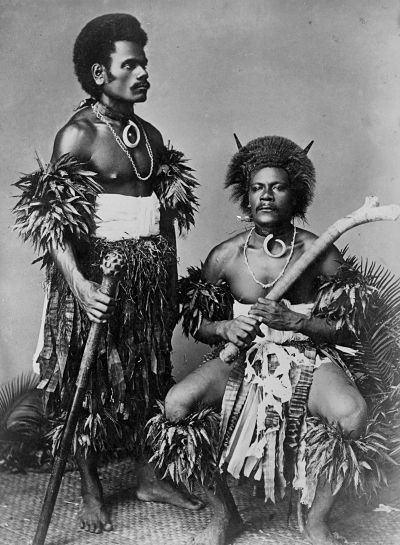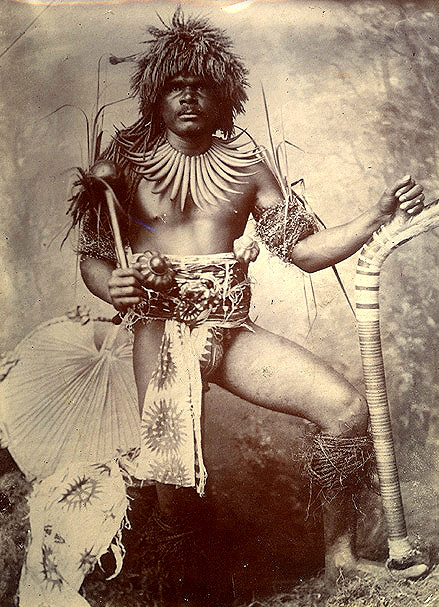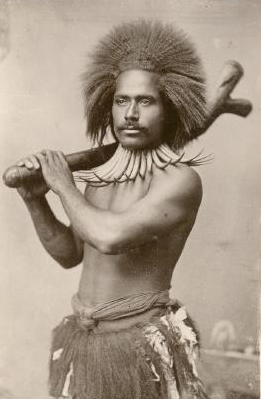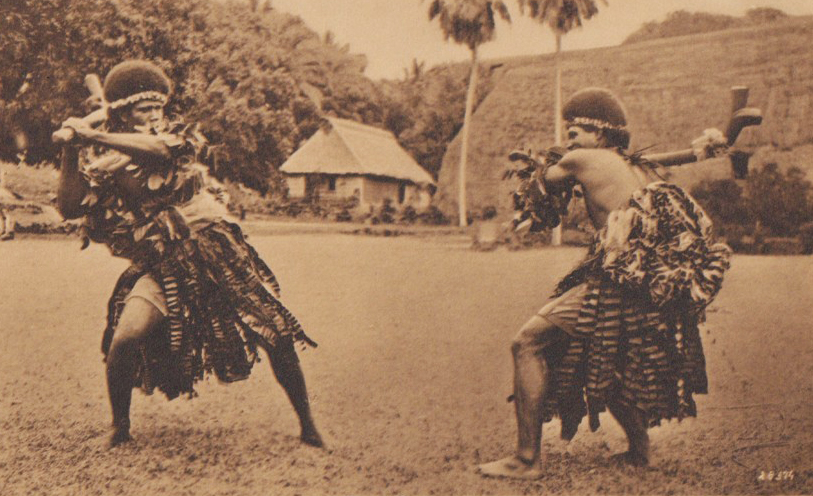Beautiful Antique Fijian 'Snake Club' Gata Waka, A Fijian Warrior's Battle Club With Skull Splitter End, Known as a Gunstock Club. One Of The Most Important Possessions Of Fiji Warrior To Demonstrate His Status Is To Slay An Enemy With The Gata Waka
18th to 19th century, an early19th century Fiji battle club. Excellent condition with fabulous natural patina. So called because of their resemblance to the butt of a gun, they are actually have no relation to rifles or muskets, and predate their appearance. It could be described as a dueling club as it could be used to parry, and then bring the bladed end down on its victim. Another trick the Fijians would use is to pin them down by the neck with the crook of the club and then snap. Probably nokonoko wood. These clubs are made from the buttress roots of an uprooted sapling that has been planted and deliberately and carefully trained to produce the desired shape. The heavy two handed war club in all its various forms is regarded as being the favourite arm of the Fijian warrior. To slay an enemy with a club brought the warrior more prestige than to kill with any other weapon. Sometimes in order to gain 'Koroi, killer status, a detained prisoner would be speared and then administered a killing blow by a warrior to the head with a club. The fact that the club shattered that part of the body held most sacred by Fijians; the head, accounted in some degree for the special psychological aura surrounding it and distinguishing it from every other weapon in the Fijian warrior's armoury.
A tally of kills made with a club was often kept by a means of nicks or notches on the head or handle, by boring small holes in the shaft. A 19th century Fijian Gata Waka snake club of dark brown patina, the heavy gunstock head the main section with raised medial ``skull splitter`` ridge, the tapering oval section haft with swelling butt. The role of the craftsman in Fijian culture was a much-valued skill and the woodcraftsmen in Fiji formed a distinct group in the community, with their own chiefs and specialists in making various items. Clubs were lovingly crafted and some clubs required years to make. Club carvers 'matai ni malumu' were highly skilled in selecting the correct type of wood for making the club and experienced enough to experiment with design as the variation in design and ornamentation on Fijian clubs attest to.
According to Rod Ewins, "This type of club is notable for the cheeks that were pounded with rocks while the tree was growing. The ridges running across the cheeks are typical." (Traditional Fijian Artefacts, Just Pacific, 2014, p. 89, fig. 6.34(i)) A small rounded ridge is located at the base of the spur at the head of the club. It is called the Tere Tere after the frill of an iguana. Small defensive wood cut in the haft midsection. This Gatawaka or gunstock club is around 37.5 inches long and an absolute beauty.
Code: 20893
1950.00 GBP



